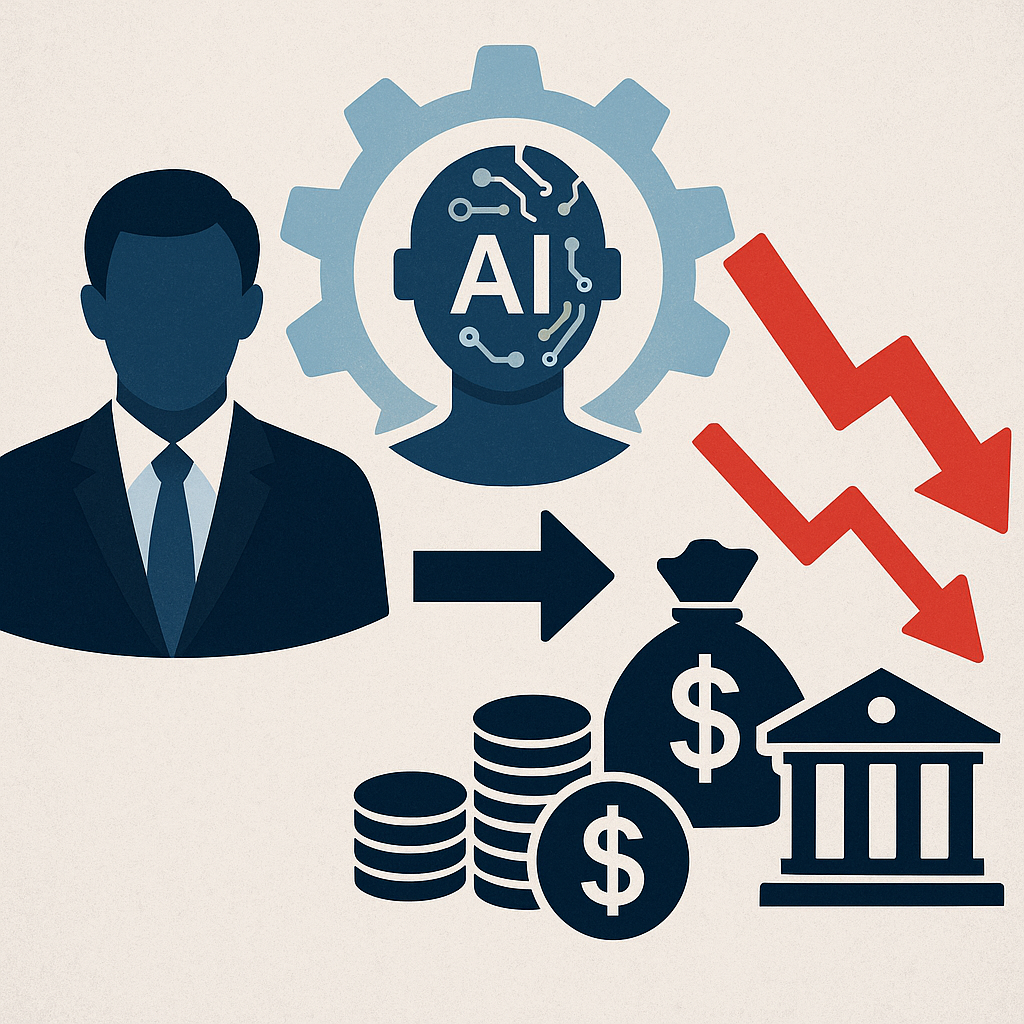
The financial advisory landscape is experiencing a seismic shift, and generative AI sits at the epicenter of this transformation. How generative AI reduces financial advisory costs has become a burning question for both advisors and clients seeking more accessible financial guidance. This revolutionary technology is dismantling traditional cost barriers while maintaining the personalized touch clients expect from professional financial advice.
Traditional financial advisory services have long been criticized for their high fees and limited accessibility. The average financial advisor charges between 1% to 2% of assets under management annually. For many Americans, this pricing model creates a significant barrier to professional financial guidance. However, generative AI is rewriting these rules entirely.
The Traditional Cost Structure Problem
Financial advisory firms face substantial overhead costs that directly impact client fees. Human advisors require extensive training, ongoing education, and substantial compensation packages. The typical advisory firm allocates roughly 60% of revenue to advisor compensation alone.
Office space, compliance systems, and support staff add additional layers of expense. These costs inevitably trickle down to clients through management fees and minimum account requirements. Many firms require minimum investments of $250,000 or higher, effectively excluding middle-class Americans from professional financial guidance.
The inefficiency doesn’t stop there. Human advisors spend considerable time on routine tasks. Portfolio rebalancing, risk assessment calculations, and basic financial planning consume hours that could be dedicated to high-value client interactions. This time inefficiency contributes directly to higher service costs.
How Generative AI Disrupts Advisory Costs
Generative AI attacks these cost centers systematically. The technology automates routine analytical work that previously required human intervention. Complex portfolio analysis that once took hours now completes in minutes, reducing the time investment per client dramatically.
AI systems can process vast amounts of market data simultaneously. They analyze economic indicators, company financials, and market trends without fatigue or human error. This capability eliminates the need for large research teams, traditionally a major cost center for advisory firms.
Client onboarding represents another area where generative AI delivers substantial savings. AI-powered systems can complete risk assessments, goal-setting exercises, and initial portfolio recommendations automatically. The process that once required multiple meetings now completes through intelligent questionnaires and automated analysis.
Documentation and compliance tasks become streamlined through AI automation. Regulatory reporting, client communications, and portfolio documentation generate automatically, reducing administrative overhead significantly.
Specific Cost Reduction Mechanisms
Generative AI reduces financial advisory costs through several concrete mechanisms. Automated portfolio management represents the most significant savings opportunity. AI systems monitor portfolios continuously, executing rebalancing trades when necessary without human intervention.
Research and analysis costs plummet when AI systems replace human analysts. A single AI system can analyze thousands of securities simultaneously, providing insights that would require teams of human researchers. This capability reduces research-related expenses by up to 80% in many firms.
Client communication becomes more efficient through AI-powered chatbots and automated reporting systems. These tools handle routine inquiries, schedule appointments, and provide account updates without human involvement. The reduction in support staff requirements translates directly to lower operational costs.
Tax optimization strategies become more sophisticated and less labor-intensive through AI analysis. The technology identifies tax-loss harvesting opportunities, optimal withdrawal strategies, and estate planning considerations automatically, delivering value that previously required specialized expertise.
Real-World Implementation Examples
Betterment, one of the pioneering robo-advisors, demonstrates how generative AI reduces financial advisory costs practically. Their platform charges just 0.25% annually, compared to traditional advisors’ 1-2% fees. This 75% cost reduction stems from AI-driven portfolio management and automated client services.
Wealthfront offers another compelling example. Their AI systems manage over $25 billion in assets with minimal human intervention. The platform provides tax-loss harvesting, direct indexing, and sophisticated portfolio optimization at a fraction of traditional advisory costs.
Charles Schwab’s Intelligent Portfolios showcase how established firms integrate AI cost savings. Their hybrid model combines AI efficiency with human oversight when needed, reducing overall service costs while maintaining quality standards.
Personal Capital, now part of Empower, uses AI to provide comprehensive financial planning tools typically reserved for high-net-worth clients. Their technology makes sophisticated financial analysis accessible to middle-income Americans at dramatically reduced costs.
Impact on Advisor Business Models
Traditional advisory firms are adapting their business models to incorporate AI cost savings. Many firms now use AI for routine tasks while focusing human advisors on relationship management and complex financial planning scenarios.
The subscription-based advisory model gains traction through AI efficiency gains. Firms can offer flat-fee services because AI reduces the variable costs associated with client management. This model provides more predictable costs for clients while maintaining profitability for advisors.
Hybrid advisory models emerge as the preferred approach for many firms. AI handles data analysis, routine monitoring, and basic client communications, while human advisors focus on complex problem-solving and emotional support during market volatility.
Specialized advisory niches become economically viable through AI cost reductions. Advisors can serve specific demographics or focus on particular financial planning areas without maintaining large overhead structures.
Client Benefits Beyond Lower Fees
Generative AI reduces financial advisory costs while simultaneously improving service quality. AI systems provide 24/7 monitoring and instant responses to market changes, something impossible with human-only advisory models.
Personalization improves dramatically through AI analysis capabilities. These systems can consider hundreds of variables simultaneously when making recommendations, providing more tailored advice than humanly possible.
Behavioral coaching becomes more consistent and evidence-based through AI insights. The technology identifies spending patterns, saving opportunities, and behavioral biases without human judgment limitations.
Educational resources become more personalized and accessible through AI-powered content generation. Clients receive customized explanations and educational materials based on their specific financial situations and knowledge levels.
Challenges and Limitations
Despite significant advantages, generative AI in financial advisory services faces important limitations. Complex emotional and psychological aspects of financial decision-making still require human expertise and empathy.
Regulatory compliance presents ongoing challenges for AI-driven advisory services. Financial regulations require human oversight and responsibility for investment recommendations, limiting full automation possibilities.
Technology failures and cybersecurity concerns create potential risks that traditional advisory models avoid. Clients must trust sophisticated systems with their most sensitive financial information.
Market anomalies and unprecedented economic events may challenge AI systems trained on historical data. Human judgment remains crucial during market crises and unusual economic circumstances.
Future Cost Reduction Potential
The evolution of generative AI promises even greater cost reductions in financial advisory services. Natural language processing improvements will enable more sophisticated client interactions without human intervention.
Integration with other financial technologies will create comprehensive ecosystem solutions. Banking, insurance, tax preparation, and estate planning services may consolidate into single AI-powered platforms.
Predictive analytics capabilities will become more sophisticated, potentially preventing financial mistakes before they occur. This proactive approach could save clients significant costs through better decision-making timing.
Regulatory technology integration will streamline compliance processes further, reducing another major cost center for advisory firms.
Making the Transition to AI-Enhanced Advisory
Clients considering AI-enhanced financial advisory services should evaluate several key factors. The firm’s technology infrastructure, human oversight levels, and regulatory compliance record require careful examination.
Cost transparency becomes crucial when evaluating AI-powered advisory services. Understanding exactly what services AI provides versus human advisor involvement helps set appropriate expectations.
Data security and privacy protections deserve special attention given the sensitive nature of financial information. Firms should demonstrate robust cybersecurity measures and clear data handling policies.
Integration capabilities with existing financial accounts and services can significantly impact the overall user experience and effectiveness of AI-powered advisory solutions.
The transformation of financial advisory services through generative AI represents more than simple cost reduction. This technology democratizes access to sophisticated financial guidance while maintaining the quality standards clients deserve. As AI capabilities continue advancing, the gap between traditional and AI-enhanced advisory costs will likely widen further, making professional financial guidance accessible to broader segments of the American population.
The question is no longer whether generative AI will reduce financial advisory costs, but rather how quickly traditional firms will adapt to remain competitive in this evolving landscape. Early adopters of AI-enhanced advisory services position themselves advantageously for the future of financial guidance, benefiting from both cost savings and improved service quality.
